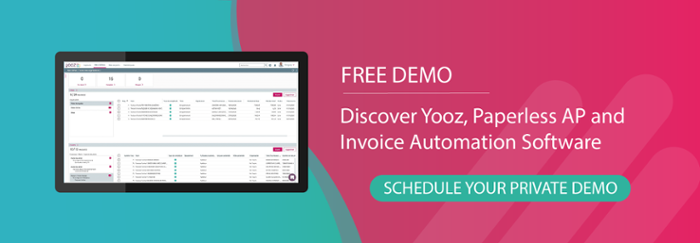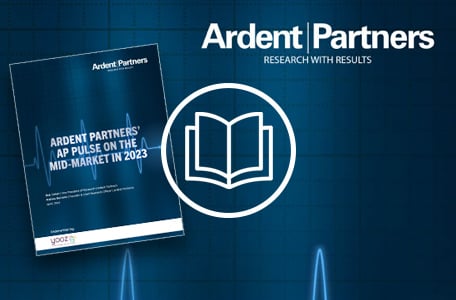Efficient Accounts Payable (AP) procedures are vital for organisations to maintain accurate financial statements and records, quickly process purchase orders, and ensure timely payments to both vendors and suppliers. To accomplish this, more and more companies are looking to technology in general, and Accounts Payable automation in particular.
If your company is considering making this transition from manual processing, it’s crucial to understand the best practices for streamlining the cycle and addressing common challenges which you may face. Whether you’re hoping to automate to make dealing with AP faster and more precise in the upcoming months or within the next few years, here is a guide to streamlining your AP process in this blog post.
What are Accounts Payable procedures?
Accounts Payable (AP) procedures refer to a set of steps and guidelines that organisations use to manage and process AP transactions, ensuring seamless payments to vendors and suppliers. Although processes may vary across organisations, the AP cycle generally includes the following key steps:
- Purchase order creation
- Receipt of invoices
- Verification
- Approval and payment processing
- Vendor payment
Let's take a closer look.
Purchase order creation
Upon identifying a need or demand for a particular product or service, organisations create a Purchase Order (PO) and send it to vendors and suppliers
Receipt of invoices
Upon receiving invoice approval for the PO, vendors and suppliers confirm their ability to fulfill the order. They then send an invoice or bill to the organisation.
Verification
The AP department cross-references the PO and invoice data to verify the accuracy of the transaction. Depending on the exact PO matching processes employed - 2-way, 3-way, or even 4-way - the AP team may also check sales receipts to confirm that the goods or services align with the initial PO.
This ensures that the correct number of goods or services were actually received and are consistent with what was ordered.
Approval and payment processing
After conducting necessary checks, the vendor's invoice is sent for approval to the relevant department or manager. Once the vendor invoice is approved, payment is processed via paper checks or electronic payment systems.
Vendor payment
Following the approval process for the money owed, the payment is sent to the vendor for their services or goods received.
The transition from a manual to automated Accounts Payable process
Traditionally, AP procedures were manually completed by the AP department. Team members created POs to pay invoices, entered data from the invoices, and manually cross-checked information before approving payments. A well-managed, efficient AP department is therefore critical to the cash flow process.
However, a manual invoice processing workflow is typically error-prone and time consuming. Therefore, while some organizations still use traditional AP process methods, today 64.4% of small and medium organizations take advantage of accounting software to automate and streamline their AP processes.
The move to Accounts Payable automation software offers numerous benefits. In addition to increased efficiency and faster payment cycles, Accounts Payable automation enhances relationships between customers and vendors while at the same time mitigating the risk of errors. This not only saves time but also prevents duplicate statements and the possibility of costly (manual) mistakes.

Best practices to streamline the Procure-to-Pay (P2P) cycle
Streamlining the procure-to-pay cycle delivers many benefits. However, to take full advantage of these benefits, certain best practices should be followed during the transition. These include:
-
Secure stakeholder buy-in
Identify and engage key stakeholders within the organisation to garner support for the transition to AP automation. Having these trusted advocates for the process can significantly impact the success of the process. -
Address employee concerns
Adjusting to using the new accounting software can take time. Address any concerns or apprehensions that employees may have about the new system by showcasing the benefits and effectiveness, such as through case studies and statistics.
Once the employees are on board, ensure that they are adequately trained to use the automation software effectively. This helps ensure that the organisation will gain the maximum benefit from their investment. -
Inform vendors and suppliers
Keep your vendors and suppliers in the loop about the transition to an automated process. Address any changes that will be required in their invoicing practices. For example, if they currently submit paper invoices, ask them to submit electronic invoices that can be quickly and easily integrated into the new accounting software platform.
Presenting the benefits of the transition to all affected parties will foster a mutually beneficial relationship. This includes prompt payment of invoices (which will also contribute to the creditworthiness of the company). -
Maintain up to date information
Ensuring that all the Accounts Payable account information is up to date is a critical part of the AP process. Consistently update invoice statements, due dates and payment information within the AP automation software to ensure timely and accurate vendor payments.
Eliminating factors that hinder an efficient Accounts Payable cycle
A lack of communication, hesitation to implement new ways of working, and a shortage of training are just some of the factors that hinder efficiency. But did you know that integrating best practices can help eliminate these factors?
For example, when employees receive training that supports them in understanding and using automation software, they’re less likely to make mistakes and more likely to feel empowered to complete their day-to-day tasks. They’ll also be more open-minded about using software, which can benefit organizational operations.
Likewise, when you obtain stakeholder buy-in, leaders and managers will advocate for automating the AP process. Once your AP team sees that your stakeholders recognize the software benefits of automated processes, they’ll be more likely to be willing to try new ways of working.
By adopting best practices, AP teams can overcome common efficiency hurdles.
What are the challenges to implementing automation AP procedures?
Although automating AP procedures offers numerous advantages, organisations may also encounter certain challenges. Two of the most common ones include technology and staff.
Let's look into each further and identify ways to overcome the issue.
Technology
One important challenge of automating the AP process includes missing out on all of the benefits of automation due to selecting the wrong type of technology.
Choosing the appropriate automation technology and software is critical to reap the full benefits of AP automation. However, with so many options available, finding the right one that offers the functionalities that you need can be overwhelming and challenging.
To choose the right platform and ensure a successful transition, management should conduct a thorough evaluation of their specific needs and objectives. These include things such as the volume of transactions, integration capabilities with any existing systems, security features, user-friendliness, scalability, and more.
Staffing
Staffing is the second major challenge.
The Institute of Financial Operations & Leadership (IFOL) has shared that 41% of businesses are planning to automate their AP processes. Although this is significant, it means that a large percentage of companies still continue to employ manual methods.
Why?
Some organisations continue to use manual methods due to their staff's limited knowledge about AP automation. Prioritise staff training and development to enhance organisational performance and productivity.
Not only will this increase organizational performance, but it could contribute to greater workplace satisfaction and productivity, as automation reduces manual labor and offers employees the chance to increase their skill set.
Ready to make the leap?
Manual AP processes are costly, time-consuming, error-prone, and potentially damaging to both supplier and vendor relationships, and employee morale. In addition, paper-based processes and inefficiencies can lead organisations to miss out on early-pay discounts, experience late payment penalties, and expose the organisation to potential legal complications.
Using automation to optimise your AP procedures is a strategic move to improve financial management and operational efficiency. By embracing best practices and addressing potential challenges, organisations can maximise the advantages of automation software while avoiding the same pitfalls of manual processing.
If you are tired of manual data entry errors or routing paper, reach out today to learn more about the benefits of using AP workflow automation. Yooz is dedicated to helping you streamline your AP processes and achieve greater, ongoing success.

.jpg)







